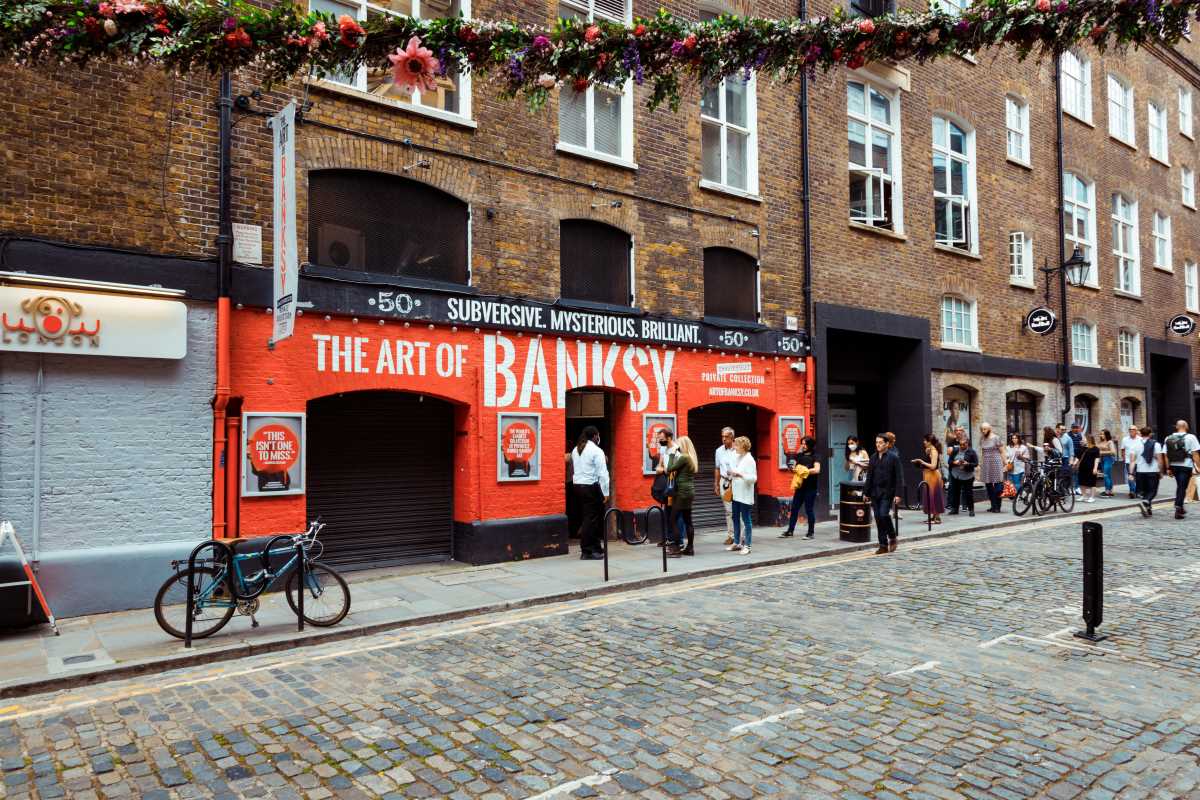Banksy, the elusive British street artist, has built a reputation for creating provocative works that challenge societal norms, political systems, and mainstream narratives. Though his true identity remains unknown, Banksy’s influence in contemporary art is undeniable. His works, often found on city walls worldwide, subvert conventional art forms and raise questions about commodification, the artist’s role, and power structures. Through his unique blend of dark humor, social commentary, and visual artistry, Banksy has become an icon in the fight against established narratives, using street art as a tool for disruption.
Art as an Act of Rebellion
Banksy’s work challenges mainstream narratives by reimagining the definition of art itself. Traditionally confined to galleries and museums, wealthy patrons have commercialized and controlled art. By taking his art to the streets, Banksy rejects these institutions, positioning street art as public, accessible, and often illegal.
- Subverting Art Institutions: Banksy creates art in public spaces, directly opposing the exclusivity of galleries and museums.
- Democratization of Art: Street art engages viewers daily, making it accessible to all rather than restricted to high-end spaces.
In doing so, Banksy critiques the commodification of art and the power structures behind its circulation.
Political and Social Critique
Banksy’s works often critique political and social systems, addressing war, capitalism, and inequality. These pieces challenge mainstream narratives by shedding light on global injustices and urging viewers to question the status quo.
- War and Violence: Works like "Bombing Middle England" use dark humor to emphasize the absurdity of war, questioning the role of violence in modern society.
- Capitalism and Consumerism: The Flower Thrower uses a violent act (throwing a Molotov cocktail) replaced with a bouquet to critique the excesses of consumerism.
- Power Structures: In Slave Labour, Banksy critiques child labor and exploitation in capitalist systems.
Banksy uses subversive imagery to challenge narratives perpetuating inequality and violence, making his work a powerful form of resistance.
Anti-Consumerism and the Art Market
Despite Banksy’s critique of consumerism, his works have been co-opted by the system he opposes, making his relationship with the art market complex and ironic. Through his art, Banksy critiques the commodification of creativity, exposing the hypocrisy of the art world.
- Shredding Incident: In 2018, Girl with a Balloon was sold for over £1 million, only to be partially shredded immediately after. This act critiques the commercialization of art and how the market reduces meaningful works into financial transactions.
- Art as Commodity: Banksy challenges how art is commodified, yet his own work becomes a valuable asset, complicating the narrative of art as a tool for social change.
By turning the art market into part of his performance, Banksy forces us to confront contradictions between artistic integrity and market forces.
Subversion Through Humor and Satire
Banksy uses humor, irony, and satire to make his art accessible and engaging while challenging mainstream narratives. Through satire, he addresses complex social and political issues in a way that invites viewers to reflect on their own beliefs.
- Humor as Subversion: In works like Laugh Now But One Day We’ll Be in Charge, Banksy uses irony to highlight the contradictions in society, suggesting that power structures are inherently flawed.
- Paradoxes and Irony: The juxtaposition of humor with serious issues, such as poverty and violence, forces viewers to reconsider their assumptions about these topics.
- Accessible Art: Banksy makes his messages relatable by using humor and visual storytelling, allowing a wider audience to engage with the issues at hand.
Humor and satire become tools for Banksy to make heavy political critiques more digestible and impactful.
Challenging Mainstream Narratives
Banksy’s street art challenges mainstream narratives by questioning authority, power structures, and societal norms. His works force viewers to confront uncomfortable truths about inequality, violence, and consumerism, often using subversive imagery to shift perspectives.
- Street Art as Protest: By creating art outside the traditional confines of galleries, Banksy rejects the commodification of culture.
- Public Art: Banksy’s street art makes political commentary accessible to everyone, bypassing the controlled spaces of traditional art institutions.
- Unmasking Hypocrisy: Through works like Slave Labour, Banksy exposes the exploitation behind global systems of capitalism, war, and inequality.
In doing so, Banksy’s art becomes a tool for social change, forcing a reckoning with mainstream narratives and systems of power.







